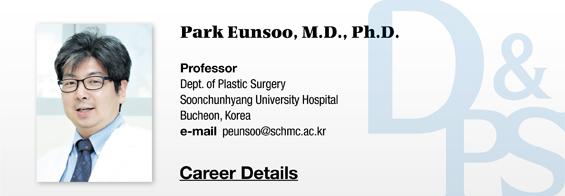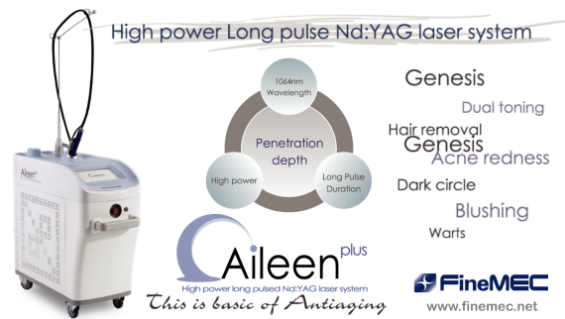▶ Previous Artlcle : #15-2. Cell therapy with human allogeneic keratinocytes
Recently, various cell studies have shown that even a small number of growth factors effectively modulate cell proliferation, extracellular matrix formation, and chemotaxis, etc. and promote wound healing. Biosynthesis of large amounts of growth factors has become possible leading to commercialization of growth factors. In the early days, growth factor products were developed for treatment of chronic wounds such as a diabetic foot or bed sores. Applications and indications have rapidly expanded to now include scar minimization through skin regeneration and rapid healing, and combination with negative pressure therapy, etc. Among these, this article will focus on Fiblast Spray (generic name, trafermin), a bFGF (basic Fibroblast Growth Factor) agent.
When a wound is sustained with blood vessel damage and skin or mucosal bleeding, platelets are first activated. They produce PDGF and TGF-b to induce activation of macrophages. Following phagocytosis, macrophages produce various growth factors including FGF to activate fibroblasts or vascular endothelial cells for wound healing. FGF is an angiogenic growth factor synthesized by capillary endothelial cells and pigment epithelial cells and plays an important role in proliferation and migration of epithelial cells. Among the seven families of FGF, bFGF is a single polypeptide chain with isoelectric point on the basic side and molecular weight of 17,000 and is found throughout the human body. bFGF has potent angiogenic action. In other words, bFGF promotes synthesis of plasminogen activator, a major reaction in angiogenesis, to induce a series of reactions involved in dissolution of vascular basement membranes, proliferation and migration of vascular endothelial cells, and tubular formation. bFGF was also found to prevent contracture caused by bacterial contamination in various reports.
Fibroblasts form a major component of fibrillar connective tissues and are involved in fiber synthesis, tissue contraction, and skeletal tissue maintenance. Fibroblasts transform into myofibroblasts in skin tissue damage from trauma, oxidation, and aging to actively participate in tissue regeneration by producing collagen and elastin, major components of the skin.
[Advertisement] Aileen plus(Long pulsed Nd:YAG Laser) – Manufacturer: FineMEC(www.finemec.net)
Fibroblasts growth factors (FGF) were first discovered in 1974 by Gospodarowicz as a simple protein that promotes proliferation of fibroblasts in bovine pituitary gland. Mass production of FGFs by bioengineering technology became possible following determination of the DNA sequence of FGF in the 1980s.
Fiblast Spray is the world’s first external liquid spray of human bFGF. bFGF was produced from E.coli by Kaken, a Japanese pharmaceutical company, through gene recombination. bFGF has been developed for indications of ulcer from bed sore or burn, epidermis formation of lower limb ulcer, fibroblast proliferation and angiogenesis.
A clinical study conducted in Japan showed its efficacy and safety; skin regeneration was observed in 98.7% of patients with burn ulcer, 88.8% of patients with lower limb ulcer, and 76.9% of patients with bed sores, with a low incidence of mild side effects of 1.51%. No serious problems have been reported in post-marketing experience of this spray. With the convenient use of once daily spraying on the wound area, Fiblast Spray can be used in burn and lower limb ulcer as well as bed sores in combination with traditional treatment to shorten treatment period.
In 1992, Robson et al. conducted the first prospective double-blind trial on topical application of recombinant bFGF on chronic bed sore and found excellent efficacy and safety. Moreover, in 2005, Akita et al. reported that application of bFGF in debridement and skin graft in 10 patients with deep burns resulted in accelerated wound healing, reduction of hypertrophic scar and improved scar elasticity.
In 2008, Muro et al. reported combination of NPWT (Negative Pressure Wound Therapy = Vacuum Assisted Closure [VAC]) and bFGF potentially accelerated wound healing. Especially, NPWT provides closure of the wound site to prevent evaporative loss of moisture with negative pressure that promotes healing. It is particularly beneficial in intractable ulcer or bed sores.
Let’s take a closer look at combination of NPWT and bFGF. First, surgical debridement of necrotic tissues and slough tissues around the bed sore is performed. Then, wound is thoroughly cleaned after hemostasis is confirmed in the bed sore.
Porous polyurethane foam is applied to extensive wound sites or bed sores with excessive exudate in the acute or infective phase. Moreover, an open, 4mm thick silicone tube is placed on the wound surface and film dressing is extensively applied over the wound site. For smaller bed sores with less exudate, the silicone tube is placed in the center of the ulcer surface and the polyurethane film (Opsite) is applied over the site.
-To be continued-
▶ Next Artlcle : #16-2. Understanding and Clinical Application of basic Fibroblast Growth Factors (bFGF)





















